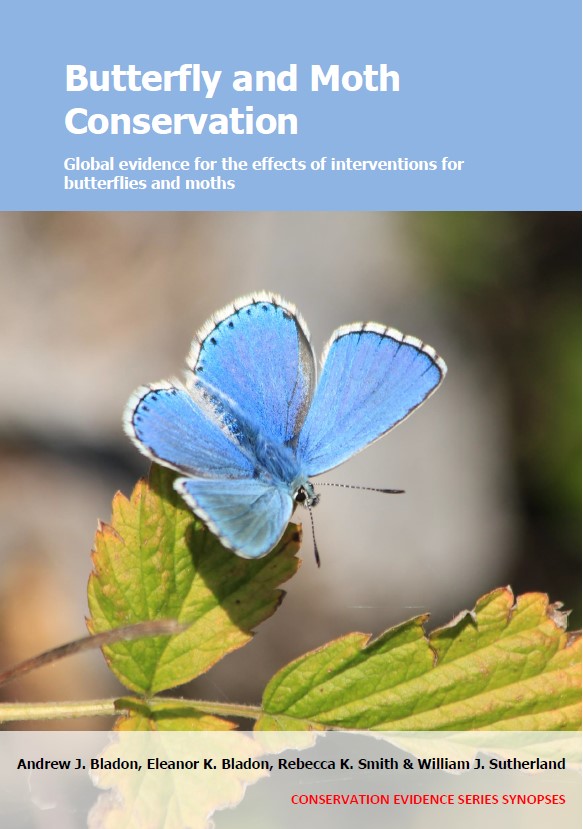Manage heathland by cutting
-
Overall effectiveness category Evidence not assessed
-
Number of studies: 3
View assessment score
Hide assessment score
How is the evidence assessed?
-
Effectiveness
not assessed -
Certainty
not assessed -
Harms
not assessed
Study locations
Supporting evidence from individual studies
A before-and-after study in 1988–1996 on a pine barren in Wisconsin, USA (Swengel & Swengel 1997) found that the abundance of five butterfly species did not change following the initiation of unintensive cutting instead of burning management. In the first three years after cutting commenced, the abundance of frosted elfin Callophrys irus (1.3 individuals/hour), Olympia marble Euchloe olympia (18 individuals/hour), Karner blue Lycaeides melissa samuelis (120 individuals/hour), Persius duskywing Erynnis persius (1.8 individuals/hour), and dusted skipper Atrytonopsis hianna (1 individual/hour) were all similar to under the previous burning regime (frosted elfin: 0; Olympia marble: 6; Karner blue: 135; Persius duskywing: 0.7; dusted skipper: 0 individuals/hour). In April 1988 and 1991, an area of pine barren was burned. In April 1994, the area was not burned, and unintensive cutting management commenced. Between 1988–1996, butterflies were surveyed along a transect at the site multiple times/year (no further details provided).
Study and other actions testedA site comparison study in 1992–2005 in a pine barren in Wisconsin, USA (Swengel & Swengel 2007) found that an area managed by mechanical cutting supported more Karner blue butterflies Lycaeides melissa samuelis than areas managed by rotational burning. Over 13 years, in an area managed by cutting, Karner blue abundance (28–32 individuals/year) was higher than in areas managed by rotational burning (9–11 individuals/year) or rotational burning and cutting (8–10 individuals/year). An unburned refuge supported a similar abundance of Karner blue (11–14 individuals/year). Within a 12,180-ha pine barren, six areas with a similar abundance of wild lupine Lupinus perennis were compared. One area was managed by mechanical cutting, one was managed with cool-season rotational burning, three were managed by burning and cutting, and one area was left as a 14-ha unburned refuge (last burned in 1988). From May–July 1992–1995 and 1997–2005, butterflies were surveyed once/year along transects in each area.
Study and other actions testedA before-and-after study in 2002–2011 in an area of heathland, woodland and grassland in South Wales, UK (Hobson and Smith 2012) reported that after scrub cutting was conducted, along with tree felling, coppicing and grazing, the number of high brown fritillary Argynnis adippe and small pearl-bordered fritillary Boloria selene increased. Results were not tested for statistical significance. In 2002, prior to scrub control, an average of seven high brown fritillary adults/hour were recorded at the site, and seven years after scrub clearance began, 14 adults/hour were recorded. Small pearl-bordered fritillary also increased in number between 2003 and 2011 (numbers not given). From 2003–2011 some patches of bracken Pteridium aquilinum, bramble Rubus fruticosus agg., honeysuckle Lonicera periclymenum and tree saplings were cut back in the Alun Valley, a 254 ha landscape comprising heathland, woodland and grassland. Tree felling (2003–2011), coppicing of hazel Corylus avellana and gorse Ulex europaeus (1999–2011) and sheep grazing (start date not given–2011) were also conducted in areas of the site. Adult butterflies were counted annually from 2002–2011.
Study and other actions tested
Where has this evidence come from?
List of journals searched by synopsis
All the journals searched for all synopses
This Action forms part of the Action Synopsis:
Butterfly and Moth Conservation
Butterfly and Moth Conservation - Published 2023
Butterfly and Moth Synopsis





)_2023.JPG)














